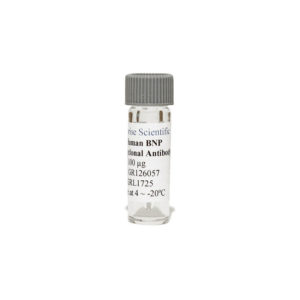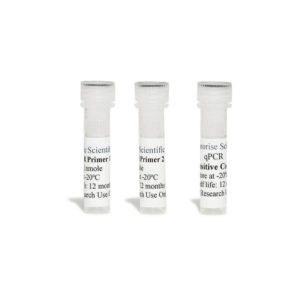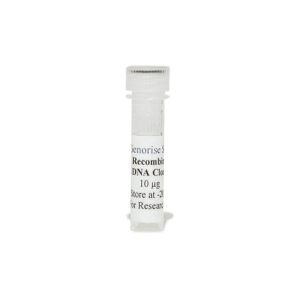Recombinant Canine Artemin
$99.00 – $2,280.00
DataSheet CoA SDS
The recombinant canine artemin protein is derived from in vivo expression of canine artemin gene in E. coli and purified using his-tag affinity column and can be used in multiple applications such as cell culture, ELISA and western blot.
Alternative names for artemin: enovin, neublastin
This product is for Laboratory Research Use Only not for diagnostic and therapeutic purposes or any other purposes.
- Description
- Product Citations
- Reviews (0)
Description
Genorise Recombinant Canine Artemin Summary
Alternative names for artemin: enovin, neublastin
Alternative name for canine: Dog
Product Specifications
| Purity | > 97%, by SDSPAGE under reducing conditions and visualized by silver stain. |
| Endotoxin Level | < 0.1 EU per 1 μg of the protein by the LAL method. |
| Activity | Measured in a cell proliferation assay using TF-1 human erythroleukemic cells. |
| Source | E. coli derived canine artemin. |
| Accession # | J9P9V2 |
| N-Terminal Sequence Analysis | Ala |
| Amino Acid Sequence | Ala37-Gly156 |
| Predicted Molecular Mass | 13 kDa |
| SDS-PAGE | 13 kDa, reducing conditions |
Background:
Artemin, also known as enovin or neublastin, is a protein that is encoded by the ARTN gene.[1] Artemin is a neurotrophic factor in the glial cell line-derived neurotrophic factor family of ligands which are a group of ligands within the TGF-beta superfamily of signaling molecules. GDNFs are unique in having neurotrophic properties and have potential use for gene therapy in neurodegenerative disease. Artemin has been shown in culture to support the survival of a number of peripheral neuron populations and at least one population of dopaminergic CNS neurons. Its role in the PNS and CNS is further substantiated by its expression pattern in the proximity of these neurons. This protein is a ligand for the RET receptor and uses GFR-alpha 3 as a coreceptor. Artemin could promote the proliferation and invasiveness of lung cancer cells in vitro and therefore could be a new potential target to combat lung cancer.[2] Artemin regulates CXCR4 expression to induce migration and invasion in pancreatic cancer cells through activation of NF-kappaB signaling.[3] ARTN and MMP-9 are involved in the occurrence, development, invasion and metastasis of EC, and play a synergistic role in the development of EC and lymphatic metastasis.[4] AhR activation and ARTN expression were positively correlated in the epidermis of patients with atopic dermatitis.[5]
References
- Baloh RH, et al. (1998). Neuron. 21 (6): 1291–302.
- Song Z,et al. (2018) Thorac Cancer 9 (5), 555-562.
- Wang J, et al. (2018) Exp. Cell Res. 365 (1), 12-23.
- Wang XH, et al. (2017) J. Biol. Regul. Homeost. Agents 31 (4), 879-887.
- Hidaka T, et al. (2017) Nat. Immunol. 18 (1), 64-73.
Product Citations
Be the first to review “Recombinant Canine Artemin”
You must be logged in to post a review.





























Reviews
There are no reviews yet.